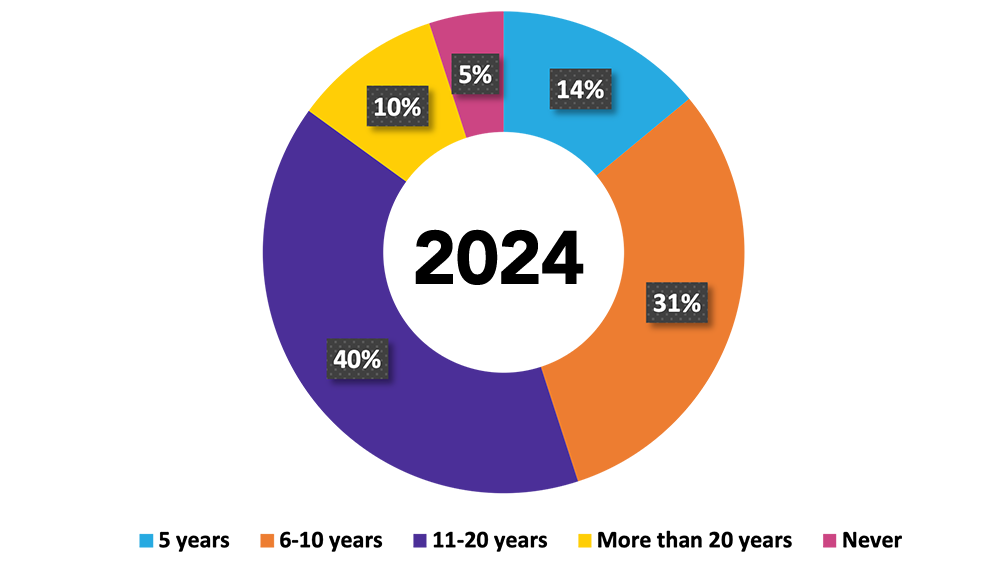Blog
June 18, 2024
Will 10G be Enough for Everybody?
By Joe McGarvey, Marketing Director |

A hallmark of any technology industry, as well as the advanced-degree-laden engineers and other technologists who invigorate that industry with innovation, is a healthy obsession over what comes next. At any given time, a more-than-trivial percentage of research and development is being devoted to answering questions that are a generation, or maybe two, from even being asked.
While there’s little doubt that many cable industry visionaries are focused on what comes next, with the “next” in this case being Internet speeds that exceed 10Gbps in both directions, it’s also clear that some of the industry’s leading technical minds are dismissive of the eventual need for additional bandwidth.
At least that’s the impression most observers would get from attending nearly any industry tradeshow or other forum focused on innovation and technology. When quizzed on the topic, most technologists publicly assert that no single human — now, or well into the future — is likely to ever require a broadband pipe faster than 1-2Gbps.
Often those assertions are buttressed by impressive charts depicting the demand curve for bandwidth over the past couple of decades and why, no matter how hard you extrapolate, or how immersive AR or VR eventually gets, none of us or our offspring is ever going to need another boost of bandwidth in our lifetimes.
That’s why the most baffling results, hands down, from the recently published ATX 2050 Project HFC Survey are connected to a question asking about the shelf-life of DOCSIS 4.0, which promises the sort of speed tiers that most technologists publicly dismiss as overkill.
Given predictions of bandwidth-hungry applications, such as the metaverse, telehealth and deeply immersive applications, eventually entering the mainstream, when do you believe the multigigabit services that DOCSIS 4.0 will deliver will run out of capacity?

Shockingly, 85% of the nearly 150 cable industry professionals who completed the ATX-conducted survey, believe that 10G speeds will run out of steam in 11-20 years, with 14% of that group estimating that customer demand will exceed what 10G is able to deliver as quickly as the next 5 years.
Those are results that needed to be checked twice, and then thrice, just to make sure the accounting is accurate. In a complete flipflop of the real-world observations mentioned above, a measly 5% of all survey takers selected the Never response.
So, how do you explain these bizzarro-world results? Why would a large swath of technologists, nearly universally dismissive of 10G ever needing a booster shot in a public forum, affix such a short expiration date to the 10G speed plateau in an anonymous survey?
The 640KB Question
One possibility is that many survey respondents may have interpreted the question from a marketing perspective. Afterall, some FTTH providers are now offering consumers service tiers of 5Gbps or faster. It’s possible that a good percentage of survey participants, recognizing that these speeds are well beyond what broadband users currently require, also understand that marketing pressure is likely to have a stronger influence on broadband billboard speeds than actual customer demand in the future.
But a better reason that survey participants may be hedging their bandwidth bets is a distant or even subconscious recollection of what might be the most ridiculed technology prediction in history.
“640K ought to be enough for anybody.”
And when Bill Gates supposedly offered that estimate back in 1981, 640KB of RAM did seem like a whopping amount, given the sophistication of applications running on personal computers at the time. But that’s the point: Nobody possesses the foresight to predict what might come next, not even Bill Gates.
Bursts of Bandwidth
Technologists might also be hedging a bit because they understand that bursts in useable bandwidth are often the catalyst for new bandwidth-hungry applications, which in turn consume additional bandwidth. Voice and video over IP applications were famously unreliable and far from suitable for professional usage when first introduced in the early days of the Internet. But fast forward a few short years and more people now consume content from streaming media applications than any other source.
The point is that it often takes innovators and investors several years to start to utilize new swaths of bandwidth, as this blog points out. Given the “give them bandwidth and the apps will come” history of the Internet, how long will it take entrepreneurs to fund a new breed of applications that begins to gain traction over connections supporting 1Gbps speeds and then fully blossom in environments twice or maybe even 10 times that fast?
The good news for MSOs is that they likely have a long-term answer for when or if 10G runs out of gas. While the built-in capacity of the coaxial plant gives them the ability to make at least another round of upgrades to their HFC networks (DOCSIS 5.0?), all MSOs are also simultaneously and gradually migrating their networks to all-fiber. According to the same survey that produced the above results, a large majority of cable professionals (87%) expect most MSOs to complete their coax-to-fiber migrations within the next 20 years.
Still, it would be nice to know what technologists actually believe when it comes to the bandwidth and speed requirements of broadband connections in the future. The answer to that question, apparently, is not so much determined by who you ask, but how you ask them.
The complete findings, as well as analysis, from the 2024 Edition of the 2050 Project HFC Evolution Survey are available here.

